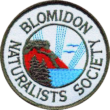Common Butterflies
Most butterflies will flit amongst brightly coloured flowers (native and non-native) and take nectar. However, many butterflies prefer things we may not have thought about – sap from trees, rotting fruit, animal faeces! This table shows some of the most common butterflies seen in this area and their preferences; it is by no means complete and you are invited to go to some of the more detailed resources listed on the website for more information. (N) indicates native to eastern North America, (NN) indicates an introduced species. A plant list that contains more native and non-native plants that will attract butterflies in general is also on the website.
| Butterflies and their approximate flight season | Nectar Plants for adults | Host plants for larvae (caterpillars) | |
| 1. | Canadian Tiger Swallowtail (May-July) | Coneflowers (N); Verbenas (N and NN); Milkweeds (N); butterfly bush (NN) | Birch, Poplar, Willow, Aspens, Apple, Black Cherry |
| 2. | Clouded Sulphur (May-October) | Common, Swamp and Butterfly Milkweeds(N); Coneflowers (N); Blue Vervain (N); Dandelion (NN); Alfalfa (NN); Clovers (NN) | Vetches, Soy Bean, Alfalfa, white sweet clover, black locust, white and red clovers |
| 3. | Common Ringlet (May-September) | Grasses and sedges | Grasses and rushes |
| 4. | Common Wood Nymph (July-September) | Butterfly Milkweed (N); Bergamots (N); Black-eyed Susan (N); Ironweed (N); Virginia Mountain Mint; Thistles (N and NN); Red Clover (NN); Wild Carrot (NN); Teasel (NN). | Grasses |
| 5. | Great Spangled Fritillary (June-September) | Milkweeds (N); Bergamots (N); Coneflowers (N); Blue Vervain (N) | Native violets |
| 6. | Hobomok Skipper (May-August) | Milkweeds (N); Blackberry (NN); Dandelion (NN); Honeysuckle (NN); Red Clover (NN); Vetch (NN) | Grasses |
| 7. | Monarch (Inward migrants May-June, outward July-November) | Milkweeds (N); Boneset (N); Goldenrods (N); Blazing Star (N); Asters (N); Joe Pye (N); Bergamots (N); Coneflowers (N); Meadowsweet (N) | Common Milkweed preferred, also Swamp Milkweed and Butterfly Milkweed |
| 8. | Mourning Cloak (March-June) | Sap from trees; rotting fruit; occasionally nectar from flowers | Willow, Elm, Birch |
| 9. | Northern Crescent (June-September) | Spreading Dogbane (N); Fleabanes (N); Goldenrod (N); White Clover (NN) | Asters |
| 10. | Painted Lady (April-November) | Asters (N); Thistles (N and NN); Blazing Star (N); Joe Pye (N); Sunflowers (NN); Cosmos (NN) | Asters, Mallows, Thistles, Hollyhocks, Coneflowers |
| 11. | Peck’s Skipper (June-September) | Joe Pye (N); Coneflowers (N); Blazing Star (N); Thistles (N and NN); Clover (NN); Alfalfa (NN) | Grasses |
| 12. | Red Admiral (April-November) | Sap from trees, fermenting fruit | Nettles |
| 13. | Silvery Blue (May-July) | Asters (N); legumes: beans, peas | Vetch, Alfalfa, Sweet White Clover, Lupines |
| 14. | Spring Azure (April-August) | Mud puddles; decaying leaves; animal droppings; Dogbanes (N); New Jersey Tea (N) | Viburnums, Dogwoods, New Jersey Tea |
| 15. | Viceroy (June-September) | Rotting fruit; carrion; animal faeces; Milkweeds (N); Asters (N); Goldenrods (N) | Willow, Poplars, Cottonwoods |
Check out this excellent website for lots more about our butterflies: https://www.novascotiabutterflies.ca
